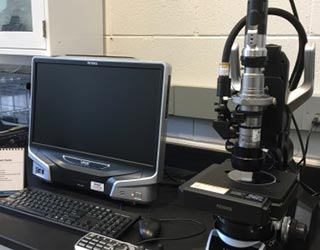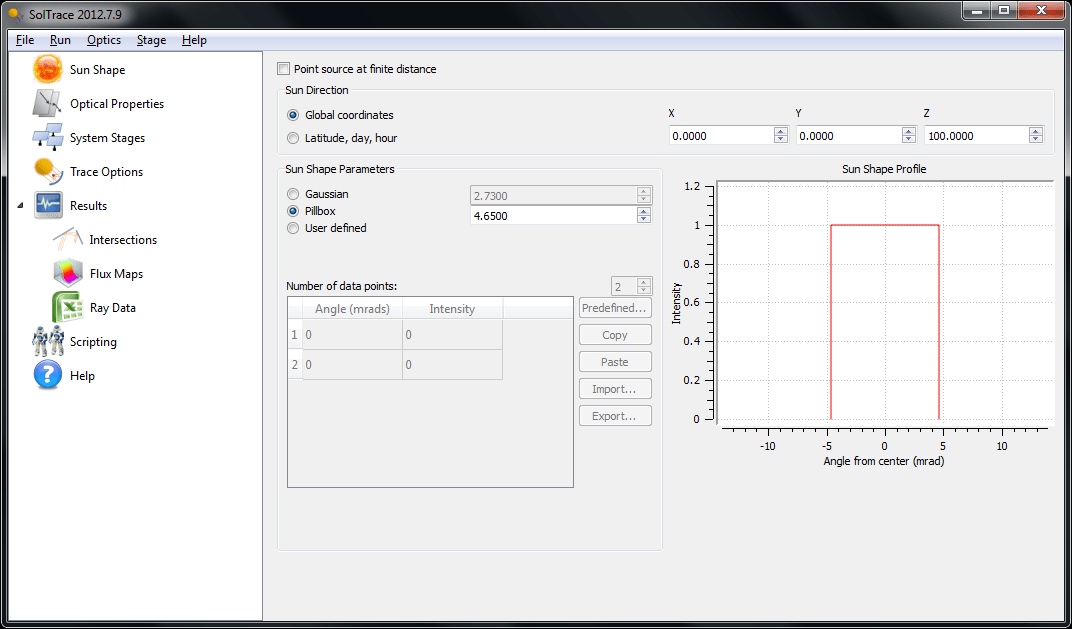


In this study, the main differences between the software packages under study were found in how they model the angular dependency of the optical properties of the materials. Another recent study focused in solar thermal applications was realized in the context of IEA/SHC Task 49 “Solar Heat Integration in Industrial Processes”, where a round-robin ray tracing software comparison for Linear Focusing Solar Collectors (LFSC) was done. At present, only three of them, Tonatiuh, HOpS and SolTrace, are licensed as open source. In this review, a total of 18 different software bundles have been analyzed. It is important to mention that rigorous optical models are needed to elucidate the optical behavior of a solar optical system.įocusing on solar thermal applications, a review of existing optical simulation tools used for Solar Central Receiver Systems (SCRS) was recently presented in. With this method, several interesting parameters, such as the optical efficiency, flux irradiation and charge carrier generation, can be accurately determined. This is the case of implementing the optical Fresnel equations to determine the path trajectory of the rays traveling through the system having into account: the ray wavelength, the light polarization, the complex refraction index and other physical properties of materials. At the end, the more realistic they are the optical models implemented in the MCFRT, the more diversity of solar energy materials can be considered for the optical system construction.

It consists on applying the geometrical optics equations to the rays emitted from a light source to determine its interaction with an optical system (the solar energy device). In fact, the Monte Carlo Forward Ray Tracing (MCFRT) is the most used method for ray tracing simulations. In addition, with the increase of CPU and GPU capacities, simulations based on ray tracing of light are the most suitable techniques to obtain accurate results, since they allow for considering realistic configurations, with complex geometries and novel materials, and also enable to model different types of light sources. Thus, the optical characterization of such devices is the key underpinning for improving solar energy conversion technologies. Furthermore, and regardless of the solar collector technology, the solar energy device can also be considered as an optical system, designed to maximize the absorption of solar radiation. Moreover, there are also mixed solar technologies (PVT) that perform both types of energy conversion. The second one is intended to directly generate electricity. The first one is intended to transfer heat, usually to a working fluid, that can be later converted into electricity. There is a great variety of solar energy technologies, which, depending on the type of energy conversion, can be classified into two large groups: solar-thermal and photovoltaic technologies. In each case, the numerical computations had deviations of less than 0.25% from reference models (either computed with another program or with exact formulas). We also show here two numerical experiments that we performed in order to validate the model and implementation: The analysis of the optical efficiency of a Linear Fresnel Reflector (with moving objects), and of a second surface mirror (with variable wavelengths).
#Soltrace example install
Additionally, OTSun has a companion webtool, OTSunWebApp, that allows for the usage of certain features of the package without the need to install anything locally. These, and other software capabilities, make OTSun extremely flexible and accurate for the optical analysis of solar devices with arbitrary geometry.
#Soltrace example free
The geometrical objects used in this package are created using the parametric 3D modeler FreeCAD, which is also a free and open source program and allows for the construction of arbitrary geometries that can be analyzed with OTSun. We present here the open source python package OTSun, which applies the Fresnel equations in their most general form, without further simplifications, and is suitable for the simulation of both solar-thermal and photovoltaic systems.

However, the available open-source packages apply excessive simplifications to the model of light-matter interaction, making that the optical behaviour of the systems can not be properly characterized, which in turn implies disagreements between physical experiments and computer simulations. Ray tracing software systems are commonly used to analyze the optics of solar energy devices, since they allow to predict the energy gains of devices in real conditions, and also to compare them with other systems constantly emerging in the market.


 0 kommentar(er)
0 kommentar(er)
